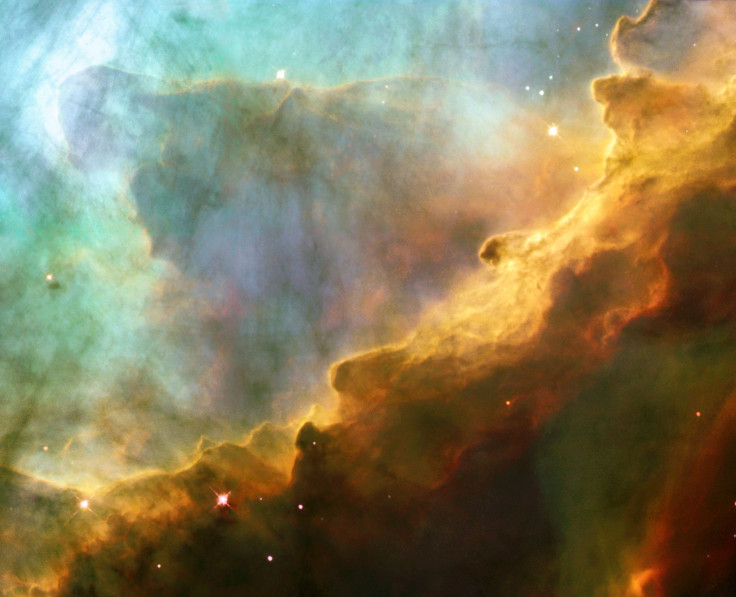Hubble Shares Stunning Image Of Cosmic Ocean Of Star-Forming Regions

KEY POINTS
- NASA shared a photo captured by the Hubble Space Telescope
- The image features a region within the Swan Nebula
- The cosmic region is filled with star formations
The Hubble Space Telescope operated by NASA and the European Space Agency (ESA) recently shared a beautiful image of a cosmic object that resembles a vast ocean. According to NASA, the stellar materials flowing within the cosmic object has turned it into a hotbed for star formations.
The subject of Hubble’s photo is a region within Messier 17, which is more commonly known as the Omega Nebula or the Swan Nebula. It lies about 5,000 to 6,000 light-years from Earth’s neighborhood and is located in the Sagittarius constellation.
In Hubble’s photo, wave-like patterns can be seen moving across the region. According to NASA, these waves were made from gas and dust. They were sculpted into wave-like patterns by the ultraviolet radiation carried by stellar winds from a nearby star.
As noted by NASA, a pocket of gas featured in the photo is about 10 times larger than the entire Solar System.
“The powerful radiation from the young stars evaporates and erodes the dense clouds of cold gas in which new stars form,” NASA explained. “One such pocket of gas is seen at the center of the brightest region of the nebula (near the bottom of this image) and is about 10 times larger than our solar system.”
Due to the interactions of the gas, dust and ultraviolet radiation, the region within the Swan Nebula has become an active location for the formation of new stars. Some of these newborn stellar objects appear as bright dots in the photo.
As noted by NASA, most of the stars produced in this region are massive enough to release powerful energies. Some of these stars are powerful enough to affect how galaxies evolve over time.
This means emissions from these stars could affect the structure of the Swan Nebula, causing it to change its shape in the future.
“Massive stars, like those in the Swan Nebula, release so much energy that they can change the evolution of entire galaxies,” NASA stated. “But less than one percent of all stars are this enormous, so astronomers know very little about them.”
© Copyright IBTimes 2024. All rights reserved.





















